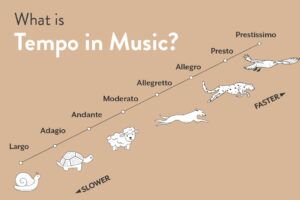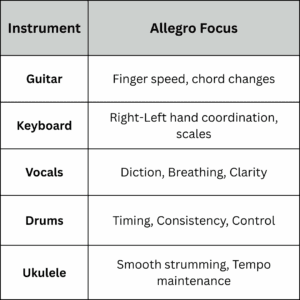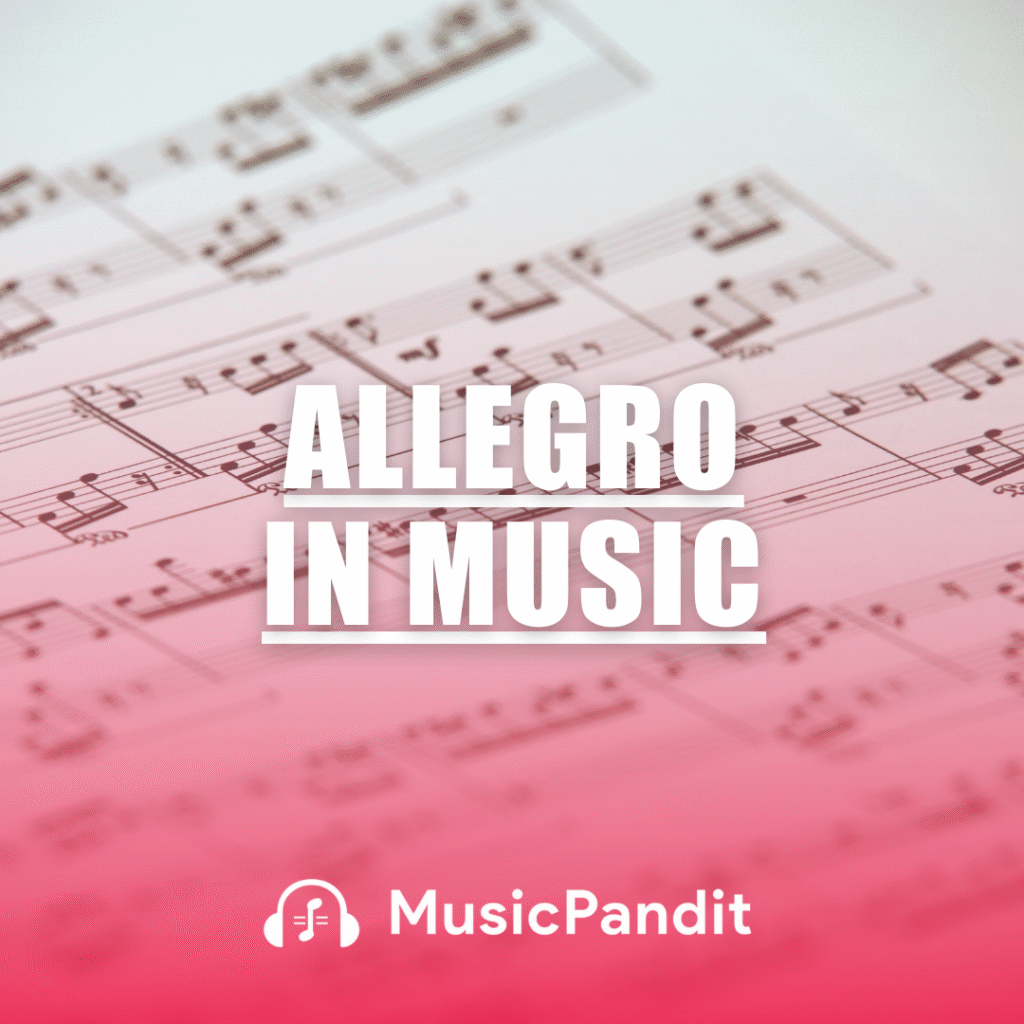When you hear the word Allegro in music, what comes to mind? A fast-paced classical composition? A lively orchestra performance? Or perhaps just a fancy Italian word on your sheet music that you sort of ignore?
Whether you’re a budding musician, an enthusiastic listener, or a music student, understanding Allegro—and how it shapes music—is an essential step in decoding the language of music.
What Does Allegro Mean in Music?
The term Allegro (pronounced ah-LEH-groh) originates from Italian and literally means cheerful, lively, or brisk. In music, Allegro is a tempo marking that indicates a fast and lively pace.
➤ Allegro Tempo Range
Allegro generally falls between 120 to 168 beats per minute (BPM). However, the interpretation may vary slightly depending on the style of the piece and the composer’s intent.
Where Does Allegro Sit on the Tempo Scale?
In the world of tempo markings, Allegro is one of the faster tempos, but not the fastest. Here’s a simplified scale to help place it in context:

Ref: hoffman Academy
The Role of Allegro in Music Interpretation
Allegro doesn’t just refer to speed. It sets the emotional tone of the music. Think of Allegro as telling a musician: “Play this part with energy, confidence, and joy.”
Why It Matters:
- Helps convey the mood of the piece
- Influences phrasing and articulation
- Guides ensemble coordination
- Shapes the listener’s experience
A Brief History of Allegro
The use of Italian words like Allegro, Adagio, and Presto became widespread in the Baroque and Classical eras when Italian music had great influence across Europe.
Composers like Bach, Mozart, and Beethoven regularly used Allegro to structure their multi-movement works, often using it for:
- The first movement of a symphony or sonata
- Fast dance movements in suites
- High-energy finales
Examples of Allegro in Famous Compositions
Let’s look at how Allegro has been used in various classical pieces:
Mozart – Symphony No. 40 in G minor, K. 550
- First movement marked Allegro molto
- A turbulent, energetic opening that defines the mood of the piece
Beethoven – “Moonlight Sonata”
- The third movement is Presto agitato, but the contrast with the earlier slower movements reflects the Allegro style’s role in creating dynamic variation
Vivaldi – “Spring” from The Four Seasons
- The first movement is Allegro, capturing the excitement and liveliness of springtime
Allegro in Music Theory and Education
For students learning music, Allegro is more than just a word:
- It teaches tempo awareness
- Encourages better rhythmic discipline
- Develops emotional expression through speed and tone
📚 In Music Exams:
Most music education syllabi (ABRSM, Trinity, etc.) include Allegro in performance pieces, sight reading, and aural tests to evaluate tempo understanding.
How Allegro Helps in Online Music Learning
In platforms like Music Pandit, where children learn instruments and vocals online, Allegro becomes a useful tool for:
- Improving dexterity and hand-speed in instruments like guitar and keyboard
- Strengthening timing in rhythm-based games and activities
- Developing vocal agility for singers through fast-paced exercises and warm-ups
Allegro vs Other Fast Tempos: What’s the Difference?
While Allegro means fast, it’s more moderately fast and cheerful in nature. Compare that with:
- Vivace: faster than Allegro, and even more spirited
- Presto: extremely fast, like a musical sprint
- Allegretto: slightly slower than Allegro, often used for graceful, lighter sections
Knowing these distinctions helps you play music with greater authenticity and emotional accuracy.
Tips for Playing Allegro Successfully
Here’s how to master pieces marked Allegro:
1. Start Slow, Then Speed Up
- Always begin practicing at a slower tempo, then gradually increase to Allegro.
2. Use a Metronome
- A metronome is essential for developing a consistent Allegro tempo.
3. Focus on Precision
- Speed without accuracy ruins the spirit of Allegro. Keep your playing clean and clear.
4. Breathe and Relax
- Tension slows you down. Stay loose, especially when playing fast passages.
Fun Fact: Allegro in Modern Music
While Allegro is mostly associated with classical music, its influence is seen in modern genres too. Think of:
- Up-tempo pop songs
- Fast jazz pieces
- Energetic Bollywood tracks
They may not be labeled “Allegro,” but the tempo and feel match its essence—joyful, energetic, and full of movement.
Allegro in Sheet Music: What to Look For
On your sheet music, Allegro is typically placed at the top-left corner of the first stave. It may also come with modifiers like:
- Allegro moderato – slightly slower Allegro
- Allegro con brio – Allegro with spirit and brilliance
- Allegro ma non troppo – Fast, but not too fast
These give even more nuance to how the piece should be performed.
Allegro in Different Instruments
Different instruments interpret Allegro differently:

Allegro for Kids: How We Teach It at Music Pandit
At Music Pandit, Allegro is introduced through:
- Games like “Fast or Slow” to identify tempo by ear
- Songs that match tempo moods (e.g., Allegro = “Happy Birthday” speed)
- Performance tasks that challenge students to play short Allegro passages
We make sure Allegro isn’t just a word—they feel it, play it, and enjoy it.
Conclusion: Allegro Is More Than Just Speed
Allegro is a gateway to musical expression. It teaches children how to infuse life, joy, and energy into their music. Understanding and mastering Allegro helps develop:
- Faster playing or singing skills
- Better emotional expression
- Confidence in performance
Whether you’re learning guitar, keyboard, ukulele, or singing with us at Music Pandit, knowing how to perform Allegro well adds excitement and dynamism to your musical journey.
Source:https://www.musicpandit.com/resources/articles/allegro/

